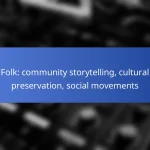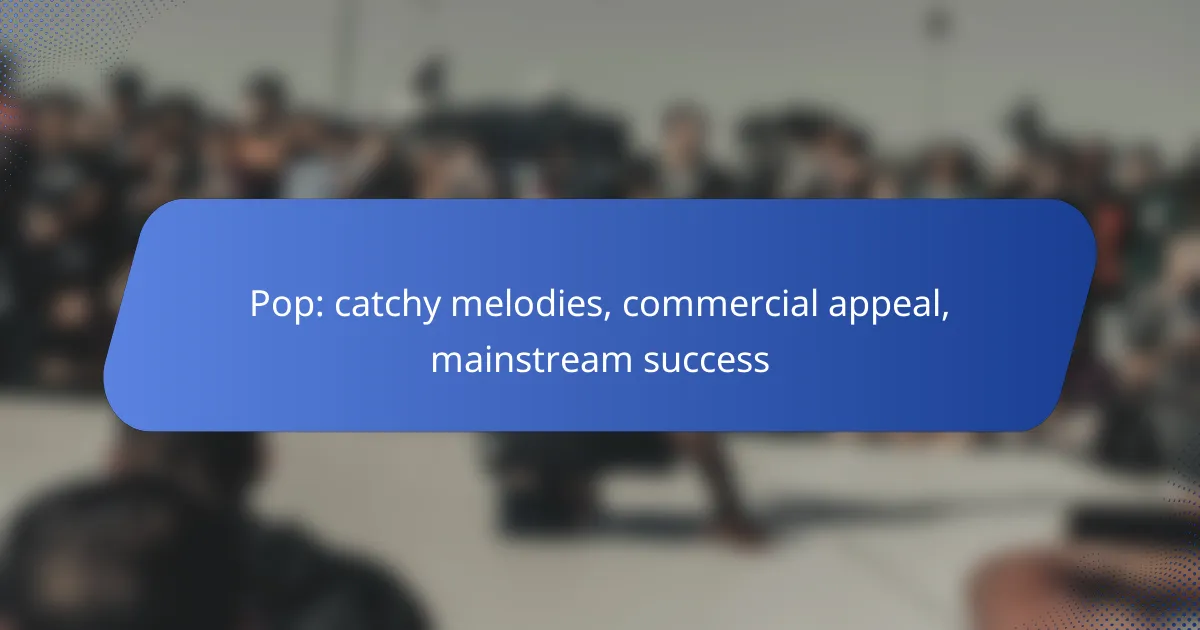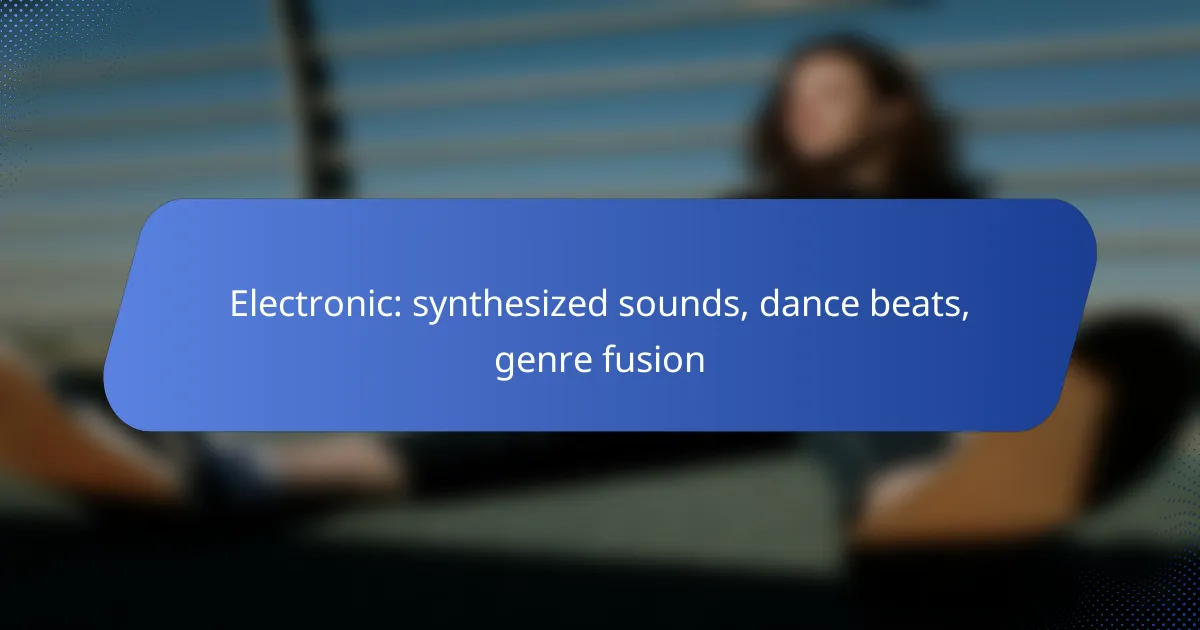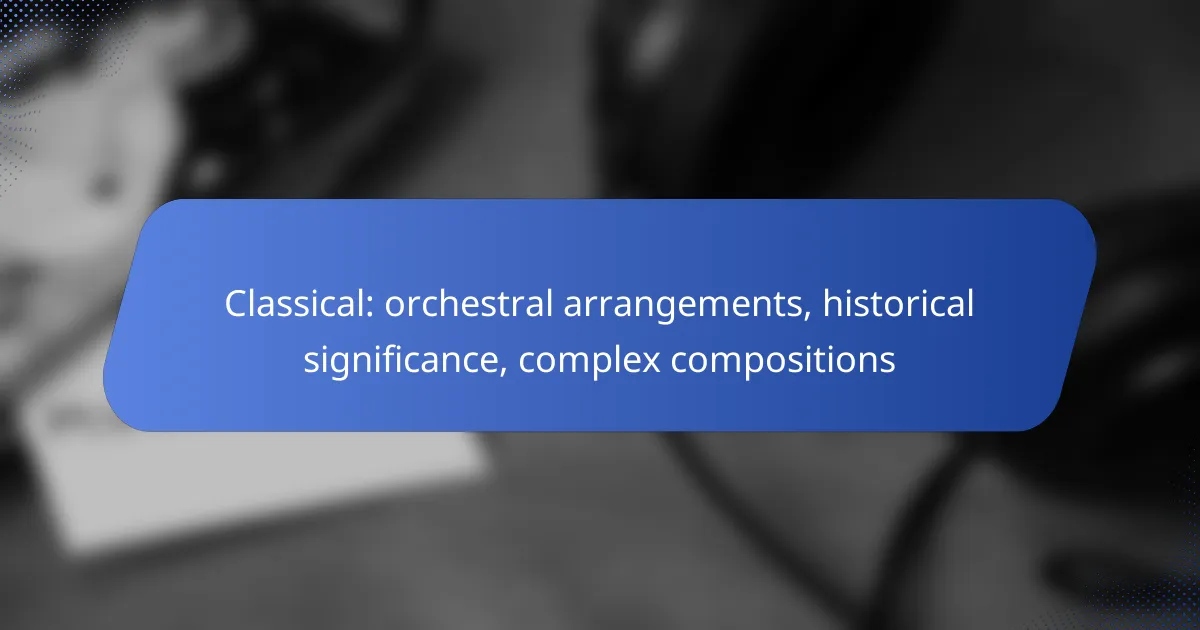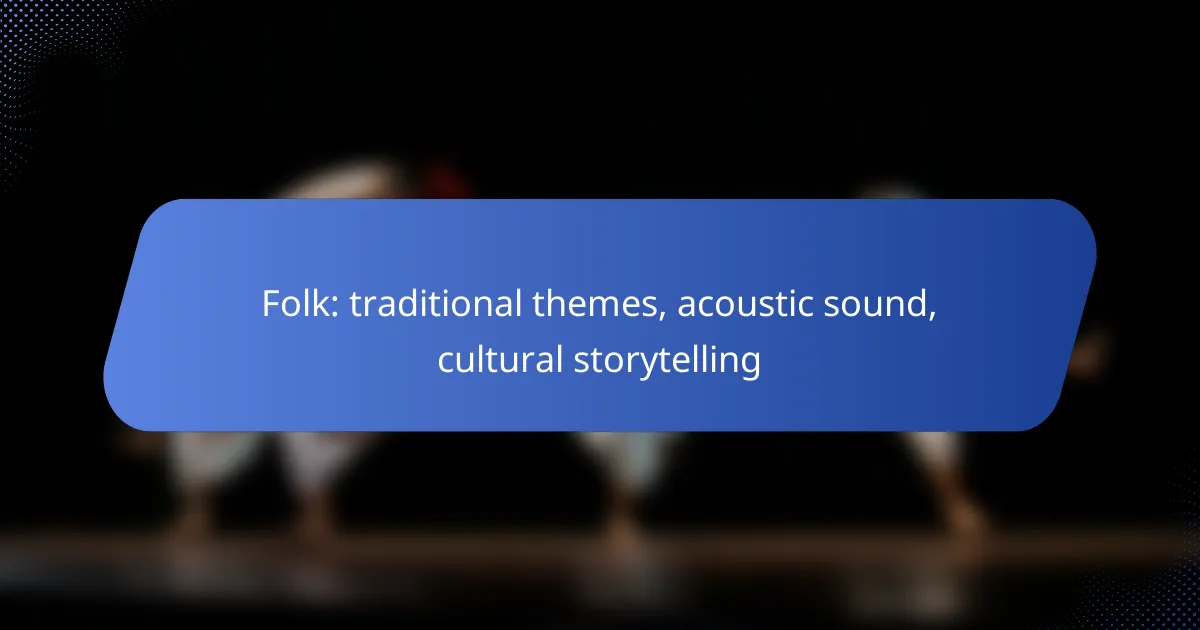Heavy metal is a genre defined by its use of heavy distortion, which amplifies the sonic intensity and complexity of the music. This genre features aggressive vocals that often employ techniques such as growling and screaming, enhancing the overall power and emotional delivery of the songs. With various subgenres like thrash, death, and black metal, each brings its own unique characteristics and fanbase, contributing to the rich tapestry of the metal scene.
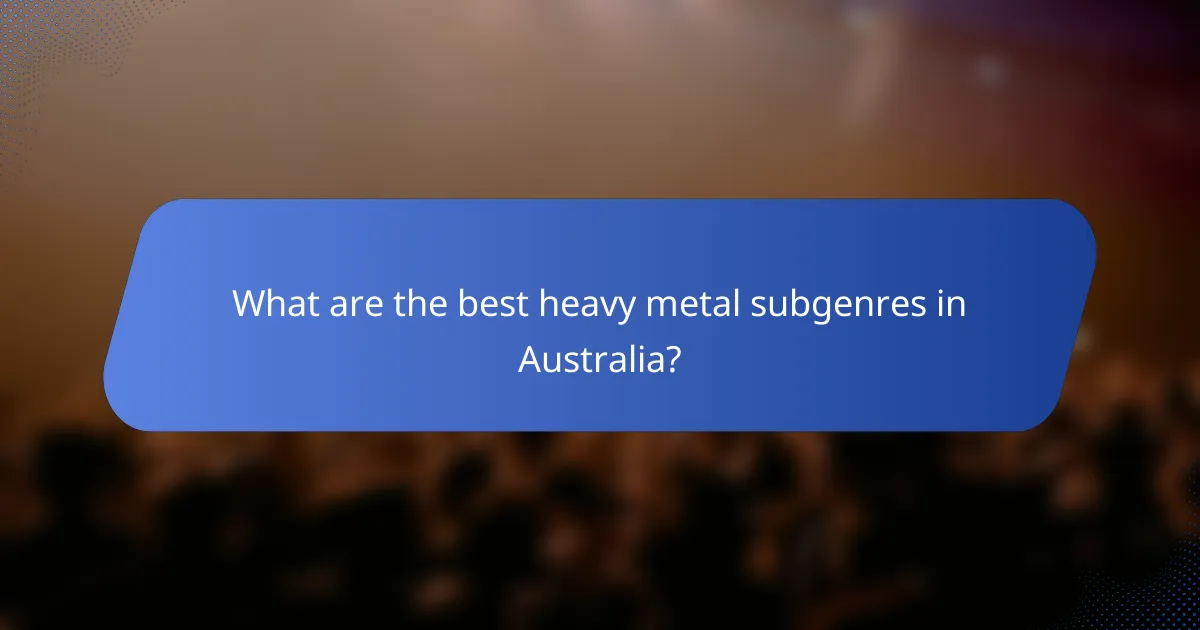
What are the best heavy metal subgenres in Australia?
Australia boasts a vibrant heavy metal scene with several popular subgenres, each offering unique characteristics and fanbases. Thrash, death, black, doom, and power metal are among the most prominent, showcasing aggressive sounds and intense performances.
Thrash Metal
Thrash metal is known for its fast tempos, aggressive guitar riffs, and complex song structures. Bands like Slayer and Metallica have popularized this subgenre, which often features socially conscious lyrics and high-energy performances.
In Australia, thrash metal has a dedicated following, with local bands like Mortal Sin and Pegazus contributing to the scene. Fans appreciate the technical skill and speed that define this style, making it a staple in live music venues across the country.
Death Metal
Death metal is characterized by its heavy distortion, deep growling vocals, and intricate guitar work. This subgenre often explores themes of mortality, violence, and existentialism, appealing to fans who enjoy darker lyrical content.
Australian death metal bands such as Psycroptic and The Berzerker have gained international recognition, showcasing the country’s talent. The scene is marked by its intense live shows and a strong sense of community among fans and musicians alike.
Black Metal
Black metal is distinguished by its atmospheric sound, shrieking vocals, and often lo-fi production. The genre frequently incorporates themes of nature, mythology, and anti-religious sentiments, creating a unique listening experience.
In Australia, black metal has a niche but passionate audience, with bands like Nazxul and Ruins pushing the boundaries of the genre. The underground scene is vibrant, with local festivals celebrating this style and its diverse subcultures.
Doom Metal
Doom metal is known for its slow tempos, heavy riffs, and a focus on creating a melancholic atmosphere. This subgenre often explores themes of despair, loss, and existential dread, appealing to fans who appreciate a more introspective approach to heavy music.
Australian bands like Witchskull and Bell Witch have made significant contributions to the doom metal scene. Their music often features long, immersive tracks that invite listeners to reflect on the darker aspects of life.
Power Metal
Power metal is characterized by its uplifting melodies, fast tempos, and fantasy-themed lyrics. This subgenre often features soaring vocals and intricate guitar solos, creating an epic sound that resonates with fans of storytelling in music.
In Australia, power metal has a devoted fanbase, with bands like Lord and Vanishing Point leading the charge. Their energetic performances and theatrical elements make power metal a popular choice for festivals and concerts across the country.
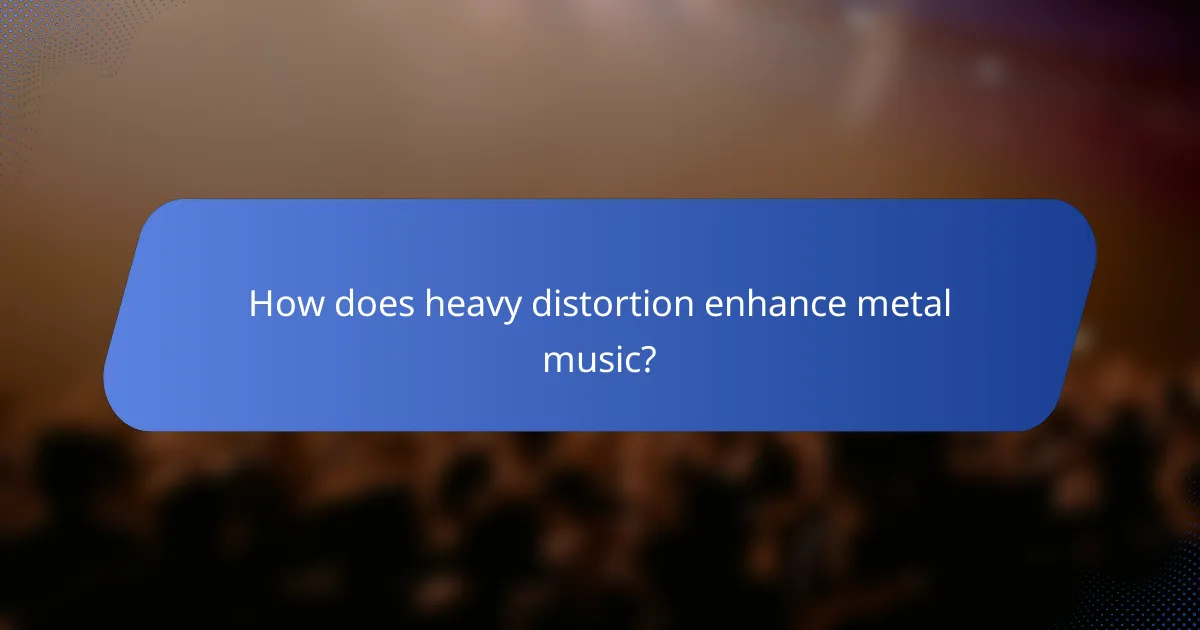
How does heavy distortion enhance metal music?
Heavy distortion is a defining characteristic of metal music that amplifies its sonic intensity and complexity. By altering the sound waves, distortion creates a more aggressive and powerful auditory experience, making it a crucial element in the genre.
Creates a heavier sound
Heavy distortion contributes to a thicker, more robust sound by altering the guitar’s tonal quality. This effect is achieved through the use of distortion pedals or amplifiers, which add harmonic overtones and sustain to the notes played. As a result, the music feels denser, allowing for a more immersive listening experience.
In metal, this heavier sound is often complemented by down-tuned guitars, which further enhances the overall weight and depth of the music. Bands frequently experiment with different levels of distortion to achieve their desired sound, ranging from mild crunch to extreme fuzz.
Increases aggression
The aggressive nature of heavy distortion is a key component in metal music, driving the intensity of the performance. Distortion emphasizes the attack of the notes, making riffs sound more forceful and dynamic. This heightened aggression resonates with listeners, creating an adrenaline-fueled atmosphere during live performances.
Musicians often pair heavy distortion with fast tempos and aggressive drumming patterns, amplifying the overall impact. This combination can evoke strong emotional responses, making the music feel more visceral and engaging.
Enhances emotional expression
Heavy distortion allows musicians to convey a wide range of emotions, from anger to despair. The raw, gritty sound produced by distortion can evoke feelings of intensity and urgency, making it a powerful tool for emotional expression in lyrics and melodies. This is particularly evident in subgenres like metalcore and death metal, where the emotional weight is crucial to the music’s impact.
Additionally, varying the level of distortion can create contrasting moods within a single song. For instance, a clean guitar passage can transition into a heavily distorted section, heightening the emotional stakes and drawing listeners deeper into the narrative of the music.
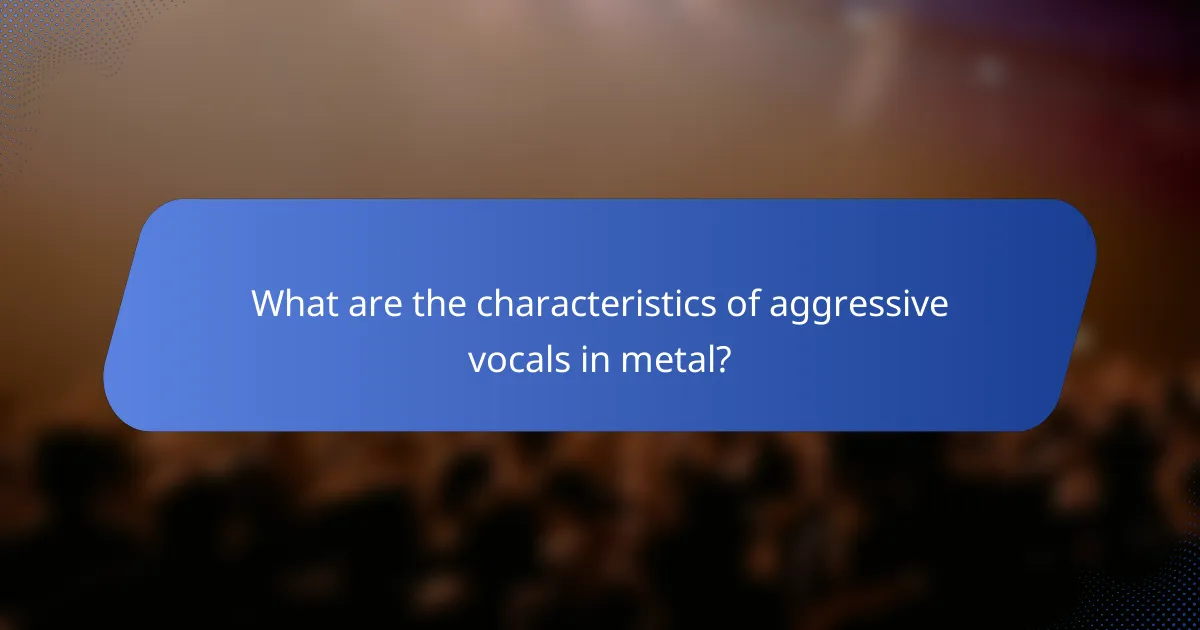
What are the characteristics of aggressive vocals in metal?
Aggressive vocals in metal are defined by their intensity and emotional delivery, often characterized by techniques like growling, screaming, and shouting. These vocal styles enhance the music’s heavy distortion and contribute to the genre’s overall aggressive sound.
Growling
Growling is a vocal technique that produces a deep, guttural sound, often resembling a roar. This style is commonly used in subgenres like death metal and black metal, where it adds a menacing quality to the music. Vocalists typically achieve growling by using their diaphragm to create a low-frequency sound while maintaining vocal cord tension.
To practice growling, start with a relaxed throat and gradually introduce distortion to your voice. It’s essential to warm up properly to avoid strain and damage to your vocal cords. Many vocalists recommend hydration and vocal exercises to maintain vocal health.
Screaming
Screaming involves a higher pitch than growling and can range from harsh, raspy sounds to cleaner, melodic screams. This technique is prevalent in genres like metalcore and post-hardcore, where it often contrasts with clean singing. Screaming can convey a wide range of emotions, from anger to despair.
To develop screaming, focus on breath control and proper technique to prevent vocal fatigue. Techniques such as false cord screaming and fry screaming are popular among vocalists. It’s advisable to seek guidance from experienced coaches or tutorials to master these styles safely.
Shouting
Shouting is a more straightforward vocal technique that emphasizes power and volume rather than pitch. This style is often used in hardcore punk and thrash metal, where the emphasis is on delivering a strong, aggressive message. Shouting can be less taxing on the vocal cords compared to growling or screaming if done correctly.
When practicing shouting, ensure you project your voice from your diaphragm and avoid straining your throat. Using a microphone can help amplify your voice without excessive effort. Regular practice and vocal warm-ups are crucial to maintain vocal health while shouting.
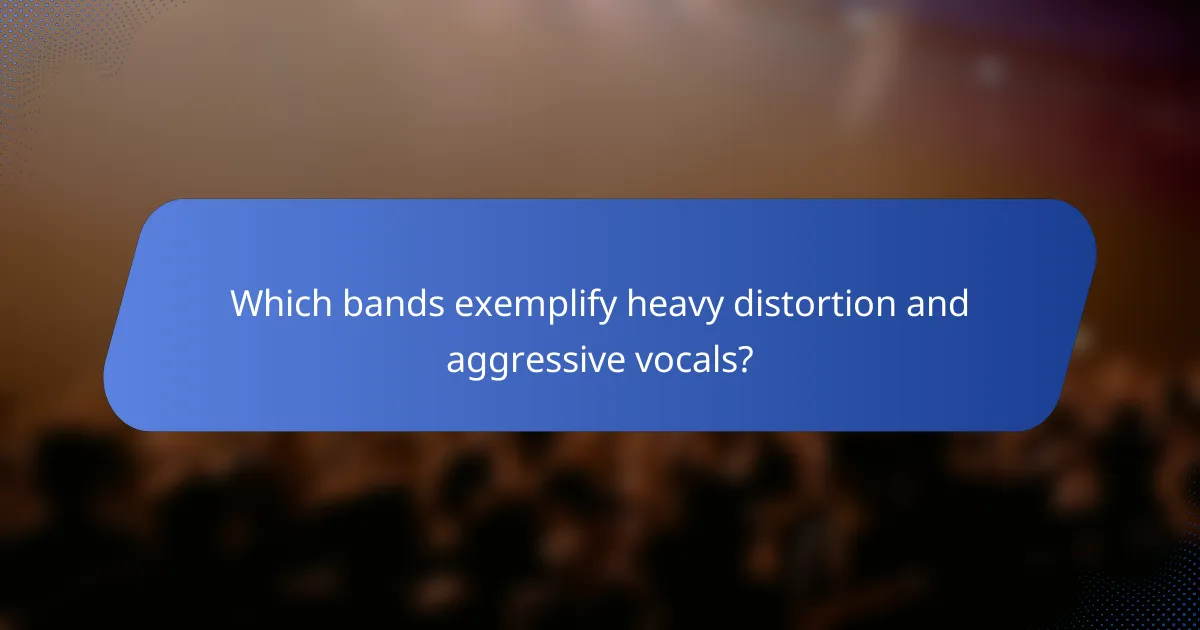
Which bands exemplify heavy distortion and aggressive vocals?
Several bands are renowned for their heavy distortion and aggressive vocals, defining the sound of metal subgenres. Notable examples include Slipknot, Meshuggah, and Parkway Drive, each bringing their unique style to the genre.
Slipknot
Slipknot is known for their intense sound characterized by heavy distortion and aggressive, often screamed vocals. Their music combines elements of nu-metal and alternative metal, creating a chaotic yet structured auditory experience.
The band’s use of multiple percussionists and a DJ adds layers to their sound, enhancing the overall aggression. Songs like “Duality” and “Psychosocial” showcase their ability to blend melody with harshness, making them a staple in the metal scene.
Meshuggah
Meshuggah stands out for their complex rhythms and heavy, downtuned guitar work, which creates a wall of sound that is both aggressive and intricate. Their unique approach to time signatures and polyrhythms sets them apart in the metal genre.
Tracks such as “Bleed” exemplify their signature sound, featuring relentless guitar riffs and guttural vocals. Meshuggah’s influence on progressive metal and djent is profound, inspiring countless bands to explore similar sonic territories.
Parkway Drive
Parkway Drive is recognized for their blend of metalcore and melodic elements, delivering powerful riffs and aggressive vocals. Their music often addresses personal and social themes, resonating with a wide audience.
With songs like “Vice Grip” and “Wild Eyes,” they combine heavy distortion with anthemic choruses, creating a dynamic listening experience. Their energetic live performances further amplify their aggressive sound, solidifying their place in modern metal.
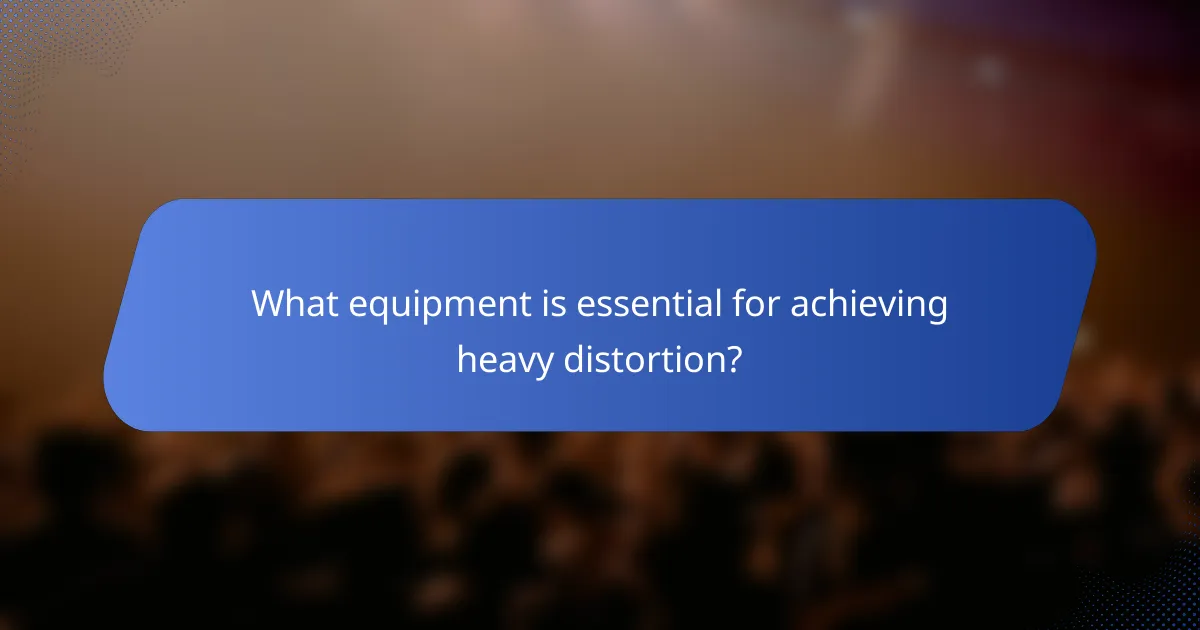
What equipment is essential for achieving heavy distortion?
To achieve heavy distortion, essential equipment includes distortion pedals, high-gain amplifiers, and specific guitar pickups. Each component plays a crucial role in shaping the aggressive sound characteristic of metal music.
Distortion pedals
Distortion pedals are vital for creating the heavy, saturated tones found in metal. They work by clipping the audio signal, which adds harmonic and inharmonic overtones, resulting in a thick sound. Popular models include the Boss DS-1 and Pro Co Rat, known for their versatility and ability to produce aggressive distortion.
When selecting a distortion pedal, consider the gain range and tonal controls. A pedal with a higher gain can produce more aggressive sounds, while those with EQ controls allow for fine-tuning to match your guitar and amplifier setup.
Amplifiers
High-gain amplifiers are essential for achieving the heavy distortion needed in metal. These amplifiers are designed to push the tubes or transistors to their limits, resulting in a powerful, distorted sound. Brands like Mesa/Boogie and Marshall are renowned for their high-gain models that cater to metal guitarists.
When choosing an amplifier, look for features like multiple gain stages and built-in EQ options. Tube amplifiers often provide a warmer, more dynamic distortion, while solid-state amplifiers can offer reliability and consistency at a lower price point.
Guitar pickups
The type of guitar pickups significantly influences the distortion quality. Humbucker pickups are commonly preferred in metal due to their ability to cancel noise and produce a thicker sound. They provide a higher output, which complements distortion pedals and amplifiers effectively.
Consider the pickup’s output level and tonal characteristics when selecting. Active pickups, like those from EMG, offer higher output and clarity, while passive pickups, such as those from Seymour Duncan, provide a more organic sound. Testing different combinations can help find the ideal setup for your desired tone.
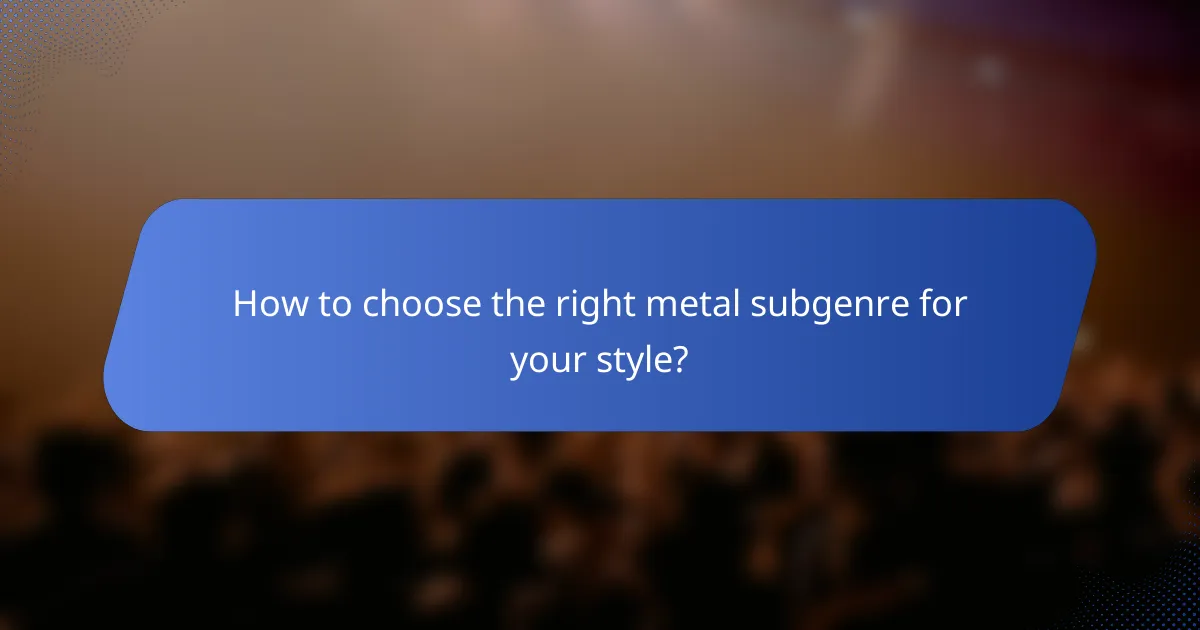
How to choose the right metal subgenre for your style?
Choosing the right metal subgenre involves understanding the distinct characteristics that define each style, particularly in terms of vocal delivery, instrumentation, and overall sound. Consider your personal preferences for aggression, melody, and lyrical themes to find a subgenre that resonates with you.
Consider vocal style
The vocal style is a crucial factor in determining which metal subgenre suits you best. Different subgenres feature varying vocal techniques, from clean singing to harsh growls and screams. For example, power metal often showcases soaring clean vocals, while death metal typically employs guttural growls.
When selecting a subgenre, think about whether you prefer melodic vocals or aggressive, harsh styles. If you enjoy emotional and lyrical storytelling, genres like symphonic metal may appeal to you. Conversely, if you favor raw intensity, genres such as black metal or grindcore might be more fitting.
It’s also worth noting that many modern metal bands blend styles, so you may find a unique combination that aligns with your taste. Listening to a variety of bands within different subgenres can help you identify the vocal styles that resonate most with you.




